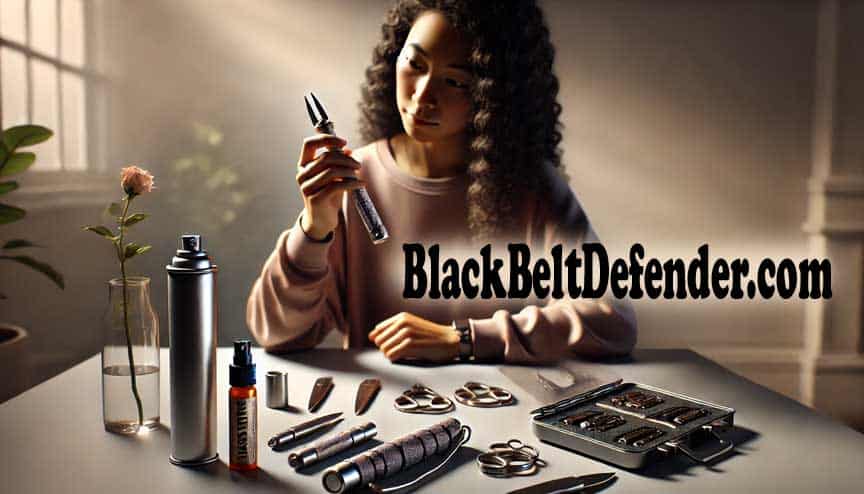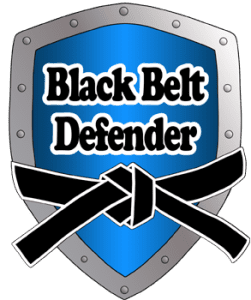
free shipping on orders over $49
We're having a 15% off sale on all our products. Enter your email below to be notified about future sales.




Personal safety has become a top priority in today’s unpredictable world. With an increasing emphasis on preparedness and personal security, self-defense tools have gained prominence as essential items for safeguarding oneself against potential threats. This comprehensive guide explores various self-defense tools, their legal implications, and how to choose the right ones to ensure your safety and peace of mind.
Self-defense tools empower individuals to protect themselves in dangerous situations. They are designed to:
Carrying self-defense tools is not about promoting violence but about ensuring personal security and having options when faced with danger. For many, these tools are a last line of defense when other measures, such as avoiding dangerous situations, have failed.
There are various self-defense tools available, each tailored to different situations and preferences. Below, we delve into the most popular options, their functionality, and legal considerations.
Pepper spray is one of the most widely used non-lethal self-defense tools. Its active ingredient, oleoresin capsicum (OC), causes temporary blindness, difficulty breathing, and intense discomfort, giving you time to escape.
Key Features:
Legal Considerations: Laws governing pepper spray vary by state. In most states, it is legal to carry pepper spray for self-defense, but restrictions may apply to the size of the canister and the concentration of OC. For instance, New Jersey limits canisters to 0.75 ounces and OC concentrations to 10%.
Best Use Cases: Pepper spray is ideal for individuals who want a simple, effective, and non-lethal option for personal safety.
Stun guns are electrical self-defense devices designed to incapacitate an attacker temporarily.
Stun Guns: Deliver an electric shock upon direct contact with an attacker.
Key Features:
Legal Considerations: Stun guns are legal in most states but often require the user to meet specific criteria, such as age or training. Some states impose restrictions or require permits. Always check your local laws before purchasing.
Best Use Cases: These tools are suitable for individuals seeking a highly effective method to neutralize a threat quickly, either from a distance or up close.
Personal alarms are non-lethal self-defense tools that emit a loud sound to deter attackers and draw attention to your location.
Key Features:
Legal Considerations: Personal alarms are legal in all states and are an excellent option for individuals who prefer non-confrontational methods of self-defense.
Best Use Cases: Ideal for children, elderly individuals, or those who want a passive self-defense option that creates awareness and buys time to escape.
Tactical flashlights are multipurpose tools designed for illumination and self-defense. These sturdy, high-lumen flashlights can temporarily blind an attacker or be used as a striking tool.
Key Features:
Legal Considerations: Tactical flashlights are legal everywhere, making them a versatile and reliable self-defense tool.
Best Use Cases: Perfect for individuals who want a multi-functional tool that can be used daily and doubles as a self-defense device.
Kubotans and tactical pens are small, hand-held self-defense tools used to deliver strikes or apply pressure to sensitive areas of the body.
Key Features:
Legal Considerations: While generally legal, some states may classify these tools as weapons if carried with intent to harm. Always use them strictly for self-defense purposes.
Best Use Cases: Suitable for individuals who want an inconspicuous self-defense tool that can be carried virtually anywhere.
Self-defense keychains, such as cat ear keychains or knuckle dusters, are designed to enhance your ability to strike or apply force during an attack.
Key Features:
Legal Considerations: Some states have restrictions on carrying tools like knuckle dusters. Check your local regulations to ensure compliance.
Best Use Cases: Great for individuals looking for a portable and discreet self-defense tool.
When selecting a self-defense tool, consider the following factors:
Using self-defense tools comes with legal and ethical responsibilities. Keep these points in mind:
Owning a self-defense tool is only part of the equation. Proper training ensures you can use your tool effectively in high-pressure situations. Consider enrolling in self-defense classes or watching instructional videos to:
Self-defense tools are invaluable assets for personal safety. Whether you prefer non-lethal options like pepper spray and personal alarms or tactical tools like flashlights and pens, there is a solution to fit every need. By understanding the functionality, legality, and proper use of these tools, you can make informed decisions to protect yourself and your loved ones.
For a wide range of high-quality self-defense tools, visit Black Belt Defender. Equip yourself with the knowledge and resources to stay safe, confident, and prepared in any situation.
As always, be safe and be prepared.
See Also:
Black Belt Defender
1867 Caravan Trail #105
Jacksonville, FL 32216-2006
Call us toll-free: (800) 859-5566
Mon-Fri: 9:00 am – 5:00 pm EST
NH based, FL Warehouse
Online Orders: 24/7/365

